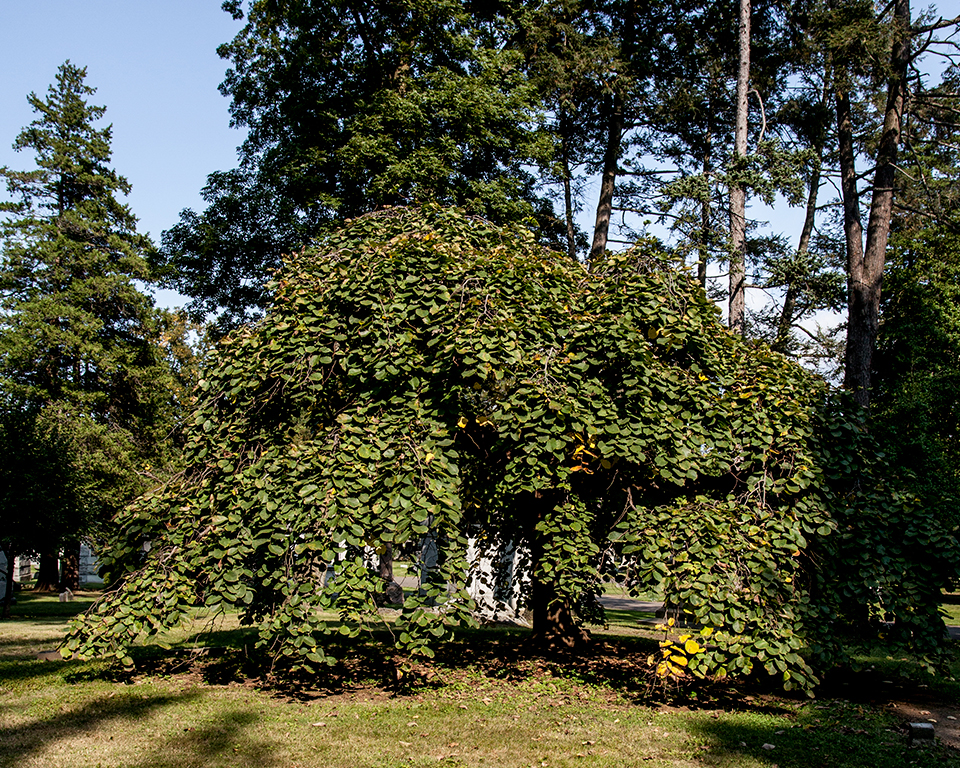ULMUS RUBRA ‘PENDULA’ – ELM, SLIPPERY ‘PENDULA’

Ulmus rubra, commonly called slippery elm, is a medium sized, coarse-textured, somewhat weedy, deciduous tree that typically grows to 40-60’ (less frequently to 100’) tall with a vase-shaped to broad-rounded crown. It is distinguished by its downy twigs, red-hairy buds (particularly noticable in winter) and slimy red inner bark (rubra meaning red). It is native to southern Ontario and to the eastern and central U.S. It generally reaches its greatest size in moist bottomland or floodplain soils. Insignificant small reddish-green flowers appear in spring before the foliage emerges. Leaves typically turn an undistinguished dull yellow in fall. Common name is in reference to the slippery-sweet, fibrous, red inner bark that Native Americans peeled from twigs and branches in spring for medicinal use to treat fevers, inflammations, wounds and sore throat. Strips of the moist bark were also chewed to quench thirst. Native Americans also used the bark for canoes, particularly when birches were unavailable. Synonymous with Ulmus fulva.

